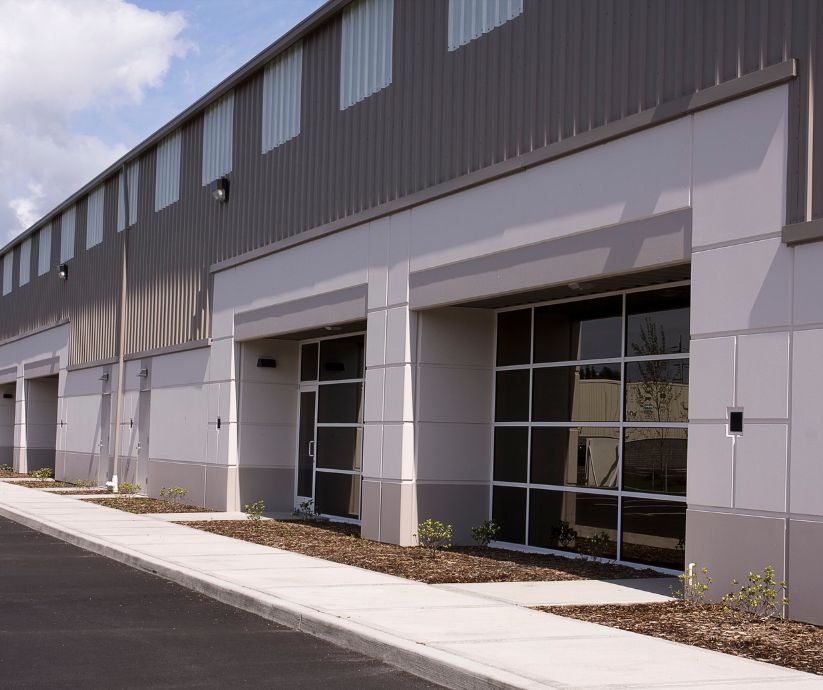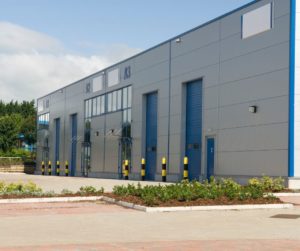
Revamp Your Business Space with Government Grants for Revitalizing Commercial Properties!
In today’s rapidly evolving economic landscape, the revitalization of commercial properties has become a focal point for local governments and businesses alike. The concept of “Government Grants for Revitalizing Commercial Properties” is a powerful one, offering financial support to property owners who aim to rejuvenate and upgrade their commercial spaces. This article delves into the intricacies of this subject, exploring the types of grants available, the benefits they bring, the application process, and much more. Let’s embark on a journey to uncover the nuances of leveraging government grants for commercial property revitalization.
Understanding the Significance
The notion of breathing new life into commercial properties goes beyond aesthetics; it’s about fostering economic growth, enhancing community appeal, and reinvigorating local business activity. By offering government grants to property owners, authorities stimulate a cycle of renewal that brings about various positive outcomes. But before delving into the benefits, let’s explore the core types of government grants available for this purpose.
Government Grants for Revitalizing Commercial Properties
Types of Government Grants
When it comes to government grants for revitalizing commercial properties, there are several distinct categories that property owners can explore. Each type of grant serves a specific purpose, catering to different aspects of property enhancement. Let’s delve into these categories to gain a deeper understanding.
Property Renovation Grants
Property renovation grants are directed towards breathing new life into aging commercial structures. These grants focus on restoring and modernizing properties that might have fallen into disrepair over time. The goal is to rejuvenate these spaces, making them safe, functional, and aesthetically appealing once again. Here’s a breakdown of what property renovation grants entail:
- Essential Upgrades: These grants commonly cover essential upgrades that are vital for the safety and functionality of the property. These upgrades can include:
- Electrical Systems: Wiring, lighting, and power distribution systems are often modernized to meet current safety standards and energy efficiency requirements.
- Plumbing: Renovation grants might encompass upgrading plumbing systems to prevent leaks, ensure water efficiency, and maintain sanitation.
- Safety Features: Grants may fund the installation of fire suppression systems, smoke detectors, and other safety measures.
- Structural Improvements: Grants may also facilitate structural improvements that address issues like foundation stability, roof integrity, and building envelope integrity. These enhancements ensure the long-term sustainability of the property.
Business Expansion Grants
Business expansion grants serve as a catalyst for local economic growth by supporting property owners who seek to expand their commercial spaces. This type of grant recognizes the potential for increased business activity and job creation that comes with expanding existing properties. Here’s what you need to know about business expansion grants:
- Enhancing Capacity: Grants aimed at business expansion empower property owners to increase the capacity of their commercial spaces. This expansion might involve:
- Adding More Floors: Property owners can utilize grants to add additional floors to their existing structures, effectively expanding available space.
- Increasing Square Footage: Grants might also cover the costs of extending the property’s square footage, allowing for more functional areas.
- Boosting Local Economies: By enabling businesses to grow, these grants contribute to economic stimulus. The expanded commercial spaces can accommodate more customers, generate higher revenue, and create new employment opportunities within the local community.
Community Revitalization Grants
Community revitalization grants take a broader perspective by targeting entire business districts. These grants encourage property owners to collaborate on projects that collectively enhance the appeal and vibrancy of the area. Let’s explore the dynamics of community revitalization grants:
- Collective Enhancement: Community revitalization grants recognize that the appeal of an area is greater than the sum of its individual properties. Therefore, these grants encourage property owners to collaborate on projects that benefit the entire business district.
- Shared Upgrades: The projects supported by community revitalization grants often involve shared upgrades such as:
- Facade Renovations: Grants might fund improvements to the exteriors of multiple properties, creating a more cohesive and attractive streetscape.
- Public Space Creation: Funds can be allocated to the creation of public spaces like plazas or pedestrian walkways, enhancing the overall experience of the area.
- Economic Impact: By collectively enhancing the appeal and functionality of a business district, community revitalization grants stimulate economic activity. This leads to increased foot traffic, more vibrant local businesses, and improved quality of life for residents.
Government Grants for Revitalizing Commercial Properties
Benefits of Utilizing Government Grants
Government grants for revitalizing commercial properties offer a range of advantages that extend beyond immediate financial assistance. These benefits ripple through the local economy and community, creating a positive impact on multiple fronts. Let’s delve into the manifold benefits of tapping into these grants:
Financial Relief
- Significant Financial Boost: Government grants provide a substantial injection of funds that significantly alleviate the financial burden associated with property renovation. This relief allows property owners to undertake renovations and upgrades that might have otherwise been financially challenging.
- Cost Alleviation: Renovation costs can be substantial, especially when addressing essential upgrades and modernization. Government grants offset these costs, making it feasible for property owners to invest in necessary improvements.
Increased Property Value
- Enhanced Asset Worth: Revitalized properties possess a higher market value due to their improved condition, modern features, and compliance with safety standards. This translates into increased asset worth for property owners, positioning their investments for potential growth in value over time.
- Competitive Advantage: Upgraded properties have a competitive edge in the real estate market. Potential buyers and tenants are more likely to choose properties that have undergone recent renovations, making them more attractive options.
Economic Stimulus
- Job Creation: The injection of funds into property upgrades stimulates local economic activity by generating employment opportunities. Contractors, laborers, and professionals from various sectors are engaged in the renovation process, leading to job creation.
- Consumer Spending: The economic ripple effect doesn’t stop at job creation. Increased local economic activity leads to higher consumer spending as individuals employed in renovation projects have more disposable income to invest back into the community.
Enhanced Community Appeal
- Attractive Localities: Revitalized commercial spaces contribute to the overall appeal of a locality. Clean, modern, and aesthetically pleasing properties enhance the visual identity of the area, making it more enticing to visitors, customers, and residents alike.
- Draw for Tenants: Enhanced properties are more likely to attract tenants seeking modern and well-maintained spaces for their businesses. This increased demand for rental properties benefits property owners by providing a consistent income stream.
Government Grants for Revitalizing Commercial Properties
Navigating the Application Process
Applying for government grants to revitalize commercial properties may appear intricate, but breaking down the process into well-defined steps can streamline your journey. Below is a step-by-step guide that simplifies the application process, helping you navigate it with confidence:
Research
- Identify Relevant Programs: Begin by researching government agencies or programs that offer grants for commercial property revitalization. Each program may cater to specific objectives and have distinct eligibility criteria.
- Eligibility Criteria Exploration: Delve into the eligibility criteria of each grant program. Factors such as property size, location, and the nature of proposed improvements will shape your qualification.
Eligibility Check
- Thorough Assessment: Carefully review the eligibility criteria for each grant type you’re considering. Understand the specific requirements and ensure your property and project align with these criteria.
- Property Factors: Consider property-related aspects such as its current condition, location within the designated area, and the proposed enhancements. This assessment will guide you in selecting the most suitable grant program.
Documentation Gathering
- Ownership Proof: Gather documents that establish your ownership of the property. This could include deeds, titles, or other legally recognized proofs.
- Project Plans: Prepare comprehensive project plans that outline the scope of the revitalization. Include details about the improvements you intend to make, the timeline, and the budget.
- Estimated Budget: Present a detailed estimate of the project’s financial requirements. Ensure that the budget aligns with the grant amount you’re seeking.
- Additional Requirements: Some grant programs may require specific documentation beyond ownership proof, project plans, and budget. Be aware of any additional materials requested by the granting agency.
Application Submission
- Accuracy and Completeness: Compile all the gathered documents and fill out the application form accurately. Ensure that all the information you provide is complete and up-to-date.
- Timely Submission: Respect the application submission deadline indicated by the grant program. Submit your application well in advance to avoid last-minute rush and potential technical glitches.
Review and Approval
- Application Review: The granting agency will review your application to assess its viability and alignment with their program’s objectives. This process may take some time, so exercise patience.
- Confirmation and Instructions: If your application is approved, you’ll receive confirmation along with any additional instructions or requirements for the next steps.
Project Execution
- Adherence to Guidelines: Once you receive approval, initiate your property revitalization project. Ensure that all activities adhere to the guidelines and regulations specified by the grant program.
- Regulatory Compliance: Fulfill any legal, zoning, or building code requirements associated with your project. Adhering to these regulations is essential to avoid delays or complications.
Government Grants for Revitalizing Commercial Properties
Real-Life Success Stories
Real-world success stories serve as powerful illustrations of the impact that government grants can have on revitalizing commercial properties. These stories provide valuable insights and inspiration, showcasing how strategic collaborations and grant utilization can lead to remarkable transformations. Let’s delve into one such example that highlights the potential of government grants:
Historic Downtown Transformation
Overview: In a historic downtown area that had experienced a decline in foot traffic and economic activity, a collaborative effort between property owners and local authorities led to a remarkable revitalization journey.
Collaborative Effort
- Property Owner Engagement: Recognizing the potential for collective enhancement, property owners within the downtown area joined forces to explore possibilities for revitalization.
- Local Authority Support: Local authorities acknowledged the significance of revitalizing the district and played a pivotal role in facilitating the grant application process.
Strategic Grant Utilization
- Facade Renovations: Grants were secured to fund facade renovations of multiple properties within the downtown area. This initiative aimed to enhance the visual appeal of the district and create a unified aesthetic.
- Improved Lighting: Funds were allocated to upgrade street lighting and building illumination. This not only enhanced safety but also contributed to a more inviting nighttime ambiance.
- Creation of Public Spaces: A portion of the grants was directed towards the creation of public spaces, such as pedestrian plazas and seating areas. These spaces encouraged community engagement and social interaction.
Positive Outcomes
- Increased Foot Traffic: The revitalization efforts resulted in a notable increase in foot traffic within the historic downtown area. The appealing aesthetics and improved lighting attracted visitors, shoppers, and tourists.
- Business Resurgence: As foot traffic increased, the district saw the establishment of new businesses. Entrepreneurs were drawn to the revived atmosphere and potential customer base.
- Community Vibrancy: The creation of public spaces facilitated community gatherings, events, and local interactions. These spaces became hubs for cultural activities, further contributing to the district’s vibrancy.
Government Grants for Revitalizing Commercial Properties
Embracing Sustainability
In today’s landscape of property revitalization, sustainability takes center stage as a critical consideration. The integration of eco-friendly practices not only aligns with global environmental trends but also yields significant benefits for property owners and the larger community. By leveraging government grants to implement sustainable features, property owners can demonstrate a commitment to both the local community and the planet. Let’s explore the importance of embracing sustainability in property revitalization:
Environmental Responsibility
- Global Trends: Sustainability has become a global imperative. Incorporating eco-friendly features aligns with international efforts to reduce carbon footprints and minimize environmental impact.
- Eco-Conscious Consumers: Modern consumers, particularly those with an environmental conscience, are drawn to properties that reflect responsible practices. Sustainable features enhance a property’s appeal, attracting a specific demographic of conscious customers.
Leveraging Government Grants for Sustainability
- Energy-Efficient Lighting: Government grants can be utilized to implement energy-efficient lighting systems. LED lighting, motion sensors, and smart lighting controls reduce energy consumption and operational costs.
- Green Roofing: Property owners can leverage grants to install green roofs, which offer insulation, stormwater management, and enhanced energy efficiency. These roofs contribute to urban biodiversity and air quality improvement.
- Water-Saving Systems: Grants can fund the installation of water-saving technologies such as low-flow fixtures, rainwater harvesting systems, and efficient irrigation methods. These features conserve water resources and reduce utility expenses.
Benefits Beyond Environmental Impact
- Cost Savings: Sustainable features translate into long-term cost savings. Reduced energy and water consumption lead to lower utility bills, resulting in improved financial efficiency for property owners.
- Enhanced Property Value: Properties equipped with sustainable features command higher market value due to their energy efficiency and reduced environmental impact. This provides an advantageous position in the real estate market.
Community and Planet Commitment
- Local Community: Embracing sustainability contributes to the betterment of the local community. Efficient lighting, green spaces, and reduced resource consumption create a more pleasant and healthful environment.
- Environmental Preservation: By implementing sustainable practices, property owners play a role in preserving natural resources and mitigating the effects of climate change. This commitment resonates with stakeholders concerned about the planet’s future.
Government Grants for Revitalizing Commercial Properties
Navigating Legal and Regulatory Aspects
Embarking on the journey of property revitalization is undoubtedly exciting, but it’s essential to navigate the intricate landscape of legal and regulatory considerations. From zoning laws to building codes, understanding and adhering to these requirements is paramount to the success of your revitalization project. Let’s delve into the crucial realm of legal and regulatory aspects:
Understanding Zoning Laws
- Property Zoning: Different zones dictate how properties can be used and developed. Familiarize yourself with the zoning category of your property to ensure your revitalization plans align with its designated usage.
- Permitted Uses: Zoning laws outline what activities are permitted within a specific zone. Ensure that your project falls within the allowable uses to prevent potential conflicts with local authorities.
Navigating Building Codes
- Structural Requirements: Building codes specify the standards for construction, safety, and structural integrity. Ensure that your revitalization project adheres to these codes to guarantee the safety of occupants and compliance with the law.
- Permits and Inspections: Obtain the necessary permits before commencing work. These permits are issued after a review of your project’s plans and specifications. Regular inspections during construction ensure ongoing compliance.
Historical Preservation Considerations
- Historic Districts: If your property is located within a designated historic district, additional regulations might apply. These regulations aim to preserve the historical character of the area.
- Approval Processes: Revitalization projects within historic districts often require approval from historic preservation boards. This involves demonstrating that your project respects the historical integrity of the property.
Environmental Impact Assessment
- Environmental Regulations: Depending on the nature of your revitalization, you might need to assess and mitigate potential environmental impacts. This could involve considerations such as soil quality, waste disposal, and air quality.
- Environmental Studies: Some projects might require environmental impact assessments conducted by experts. These studies ensure that your project aligns with environmental regulations and does not harm local ecosystems.
Stipulations of Government Grants
- Regulatory Compliance: Government grants often come with stipulations related to compliance with zoning laws, building codes, and other regulations. Ensure that your project’s plans align with these stipulations to maintain eligibility for the grant.
- Avoiding Penalties: Non-compliance with regulatory requirements can result in penalties, fines, or even project shutdowns. Diligent adherence to regulations safeguards your project and minimizes risks.
Government Grants for Revitalizing Commercial Properties
The Future of Commercial Property Revitalization
Anticipating the future of commercial property revitalization unveils a landscape ripe with opportunities and transformative trends. As urban dynamics evolve, new strategies and innovations are poised to reshape the way we approach property revitalization. Let’s explore the promising avenues that lie ahead:
Rise of Mixed-Use Developments
- Integration of Functions: The future of commercial property revitalization is marked by the rise of mixed-use developments that seamlessly blend commercial and residential spaces within a single property.
- Diverse Experiences: Mixed-use developments create vibrant environments where residents can live, work, and engage in leisure activities, all within close proximity.
- Urban Connectivity: These developments contribute to urban connectivity by reducing the need for extensive commuting and promoting a more sustainable lifestyle.
Technology-Driven Innovations
- Smart Building Solutions: The integration of smart technologies in property revitalization is set to revolutionize how buildings are managed and experienced. Smart building solutions enhance efficiency, security, and user comfort.
- IoT Integration: The Internet of Things (IoT) will play a significant role in optimizing building operations. Sensors, data analytics, and automation will enable real-time monitoring and predictive maintenance.
- Enhanced User Experience: Smart technologies will offer personalized experiences for occupants, from climate control and lighting adjustments to seamless communication with property management.
Sustainability and Green Initiatives
- Net-Zero Buildings: The future of property revitalization embraces sustainability at its core. Net-zero buildings, designed to produce as much energy as they consume, will become a standard in revitalization projects.
- Renewable Energy Integration: Solar panels, wind turbines, and other renewable energy sources will be seamlessly integrated into revitalized properties, reducing their carbon footprint.
- Circular Economy: Revitalization projects will prioritize the use of sustainable materials and promote circular economy principles, minimizing waste and maximizing resource efficiency.
Adaptive Reuse and Historic Preservation
- Creative Transformation: The future of revitalization involves creative adaptive reuse of existing structures, preserving their historical significance while repurposing them for modern functionality.
- Cultural Heritage: Historic preservation efforts will continue to enrich urban landscapes, contributing to the preservation of cultural heritage and community identity.
- Blend of Old and New: Adaptive reuse projects will seamlessly blend the charm of the past with the innovation of the present, resulting in unique and captivating spaces.
Community-Centric Design
- Human-Centered Spaces: The focus of revitalization will shift towards creating spaces that prioritize the well-being and needs of the community, fostering a sense of belonging and social interaction.
- Public Plazas and Green Spaces: Properties will incorporate public plazas, parks, and green spaces that encourage community gatherings, events, and leisure activities.
- Community Engagement: The community will actively participate in the planning and design of revitalization projects, ensuring they align with local aspirations and needs.
Government Grants for Revitalizing Commercial Properties
Conclusion
In the realm of commercial property revitalization, government grants serve as a catalyst for transformation. By combining financial support, regulatory guidance, and community collaboration, property owners can revitalize their spaces while contributing to economic growth. From property renovation to sustainable upgrades, the possibilities are vast. As the journey continues, embracing innovation, sustainability, and community engagement will shape the future of commercial property revitalization.
Remember, this article is just the beginning of your exploration into the world of government grants for revitalizing commercial properties. With the insights shared here, you’re equipped to embark on your own journey of property transformation and community enhancement.
Let’s keep the conversation going! Do you have questions about specific grant programs or success stories to share? Feel free to reach out and continue this exciting discussion.
Government Grants for Revitalizing Commercial Properties
Frequently Asked Questions about Government Grants for Revitalizing Commercial Properties
Here are answers to some of the most common queries about utilizing government grants to revitalize commercial properties:
- What are government grants for revitalizing commercial properties? Government grants are financial incentives provided to property owners to renovate and upgrade commercial spaces, fostering economic growth and community development.
- How do government grants benefit property owners? Government grants offer financial relief, increase property value, stimulate local economies, and enhance the overall appeal of commercial properties.
- What types of projects are eligible for these grants? Projects like property renovation, business expansion, and community revitalization are eligible, each catering to specific enhancement goals.
- How do I determine which grants I’m eligible for? Review the criteria for each grant type, considering factors such as property size, location, and proposed improvements.
- What documents are required for the application process? Prepare documents like property ownership proof, detailed project plans, estimated budget, and any other stipulated by the granting agency.
- Can I apply for multiple grants simultaneously? Yes, you can apply for multiple grants if your projects align with the criteria of each respective grant program.
- What role do government agencies play in this process? Government agencies oversee the grant application process, review submissions, and provide approvals based on compliance and project viability.
- How long does the application review process usually take? The duration varies depending on the agency and the complexity of the project, but it typically takes several weeks to a few months.
- Can I start my project before receiving grant approval? It’s advisable to wait for grant approval before commencing your project to ensure compliance with the terms and conditions.
- What happens if my application is rejected? If your application is rejected, you can assess the feedback provided by the agency and consider reapplying with necessary improvements.
Government Grants for Revitalizing Commercial Properties



